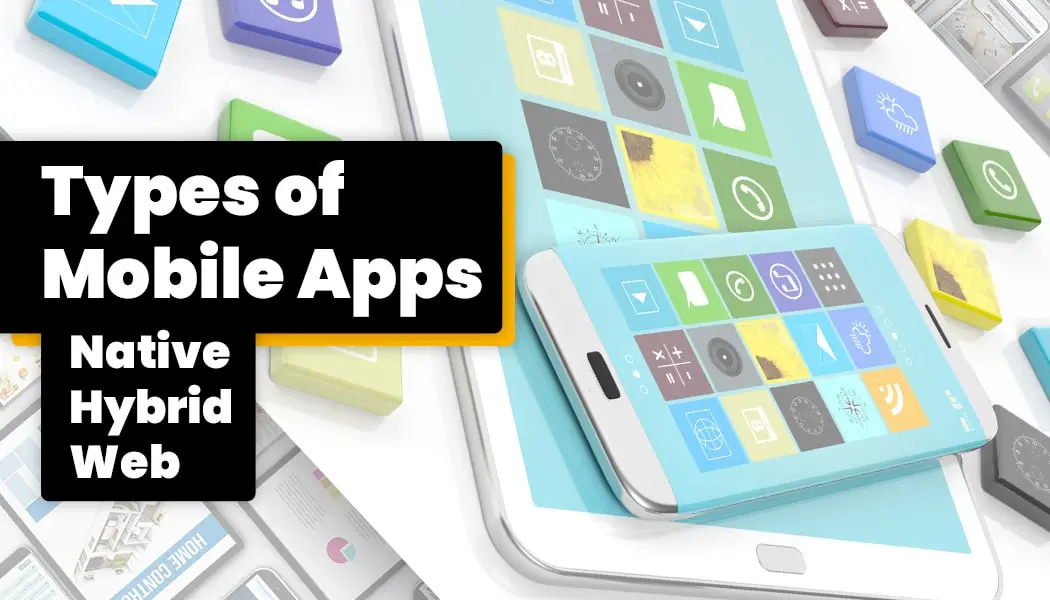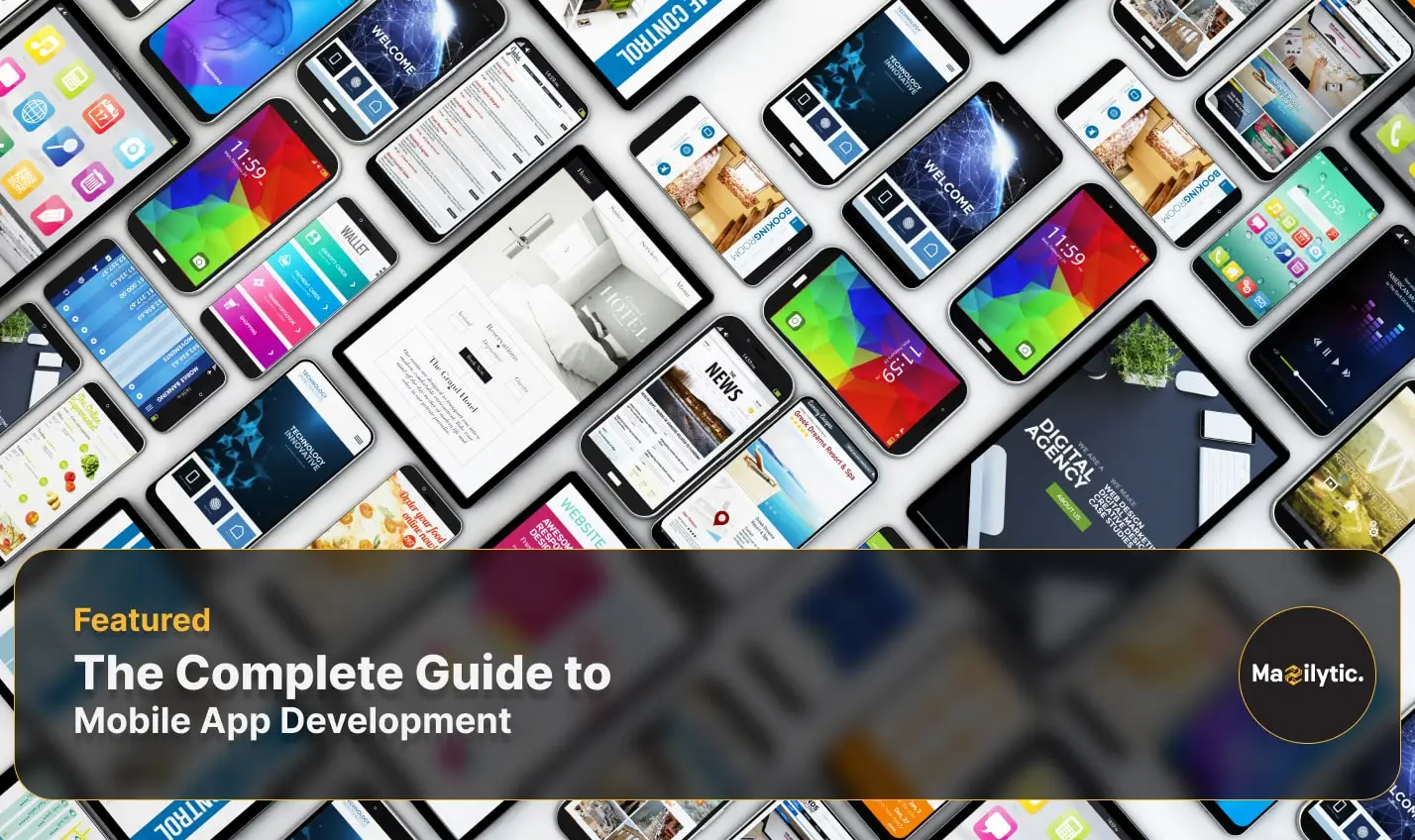
Types of Mobile Apps: Native, Hybrid, and Web
It would not be wrong to say that mobile applications are the rulers of the ruling world of connection in the present era. It has made them become an integral part of ourselves achieving purposes, past times, and unifying us with planet Earth. Yet, amid these thousands of applications that fill the spaces of our mobile devices nowadays, have you ever thought about how such applications are created? This guide dives deep into the three main types of mobile apps: Native, Hybrid, and Web Applications. Knowing their advantages and disadvantages makes you select a platform that suits your brilliant app idea.
The Mobile App Development Trilemma: Native vs Hybrid vs Web Apps
Now, think about the wonderful idea of creating a huge castle. Would you go with rugged concrete (native app), the flexible modular design (hybrid app), or the blueprint (web app)? The answer, like your app development choice, depends on your specific needs.
Native Mobile Apps:
Native mobile applications are tailor-made to operate on one or two platforms only, that being iOS or the android, and are coded using the languages supported by the operating system of that platform. This approach ensures the best possible and smooth user experience since the app is highly optimized for the device and its operating system.
Native apps reign supreme for a reason! Built specifically for one platform (iOS or Android), they offer an app user experience tailored to that system’s strengths. This platform-specific approach leads to top-notch mobile app performance – native apps are known for their speed, efficiency, and stability. They leverage the device’s full potential, with full access to features like GPS, camera, and push notifications. Plus, they feel familiar and intuitive because they follow the established design standards for each platform. The cherry on top, they can function offline, making them ideal for situations where internet connectivity is unreliable.
Advantages of Native Apps:
- Superior Performance: They are tailored for operation in a certain platform hence resulting in optimized load, superior animations, and a better user interface.
- Seamless User Experience: Customized to fit the operating system of a particular device and give users the look and feel they are used to.
- Access to Native Features: Can leverage the full range of device-specific features and capabilities, such as the camera, GPS, and push notifications. use all the device-specific options and functions and it is such as camera, GPS, push notifications, and others.
- Offline Functionality: Compared to web apps, native apps can still work offline, and thus are more efficient within the places with poor or no access to the internet connection.
- Improved Security: They are guaranteed to follow the platform’s security guidelines, reducing the risk of vulnerabilities and providing better data protection.
However, even royalty has its limitations:
- Costlier Development: Building separate native apps for different platforms requires more development time and resources, translating to higher costs.
- Lengthier Development Time: Maintaining separate codebases for iOS and Android can extend the development timeline.
Hybrid Mobile Apps:

This type of app development can be defined as a blend of both native and web-based applications since it utilizes web technologies such as HTML5, CSS, and JavaScript along with platform-specific APIs. These apps are built using technologies like React Native, Flutter, or Ionic and then embedded in a native shell that makes them interact with native features in devices. Hybrid apps offer the best of both worlds: – availability and access by a larger number of people. They can be run on multiple platforms, iOS, Android, and Windows, if built out of a single code base which is a big advantage in respect of costs of development and downstream maintenance. The kind of development that this codebase uses is web technologies such as HTML, CSS, and JavaScript which provide flexibility. On this note, however, one does not get a compromised functionality with hybrid apps. With the camera, GPS, and push notification, app developers can still develop apps for native functions via platform-specific APIs. As with native apps, most hybrid apps can sometimes be used offline and will not significantly be affected by a poor internet connection.
Here’s where hybrid apps shine:
- Cross-Platform Compatibility: A single codebase translates to reaching a wider audience across different platforms (iOS and Android) with minimal additional development effort.
- Cost-Effective Development: enables the creation of a unique source code that can be run on different operating systems, which in turn cuts the expenses on development and further support.
- Faster Time to Market: can work on multiple platforms that enable the developer to create and launch applications faster than other models – time-to-market.
- Ability to Leverage Web Technologies: can help developers take benefits of their web development experience and experience of using web technologies like HTML, CSS, and JavaScript.
- Access to Native Features: allows the usage of native device functions through platform-dependent application programming interfaces which gives a better experience for the users.
The drawbacks of hybrid mobile applications are:
- Performance Restrictions: Because hybrid apps rely on a web-based rendering engine, which might add delay, they might not run as well as native apps.
- Restricted Access to Native APIs: Although hybrid apps may have partial access to all device-specific APIs, this could limit their functionality despite their ability to use many native features.
- Inconsistent User Experience: Compared to native apps, hybrid apps may offer a slightly less intuitive user experience because they may not always entirely follow the platform’s design requirements.
- Dependency on Third-Party Frameworks: Cross-platform frameworks, which hybrid apps rely on, can add extra complexity and cause problems if they are not updated or maintained properly.
Web Mobile Apps:
Web mobile apps, also known as progressive web apps (PWAs), are web-based applications that are designed to provide a native-like experience on mobile devices. These apps are developed using usual web technologies such as HTML, CSS, and JavaScript and are optimized for mobile usability.
This translates to several advantages:
- Cost-Effective and Quick Development: Due to the use of web technologies, PWAs are frequently the cheapest and fastest to build of the three kinds.
- Wide Reach: PWAs function on all platforms and devices with a browser, allowing for a more extensive reach than native applications requiring approval to be featured on an app store.
- Easy Updates: PWAs have an advantage of being updated automatically through the web reducing on the need for new versions from app stores.
However, there are limitations to consider:
- Limited Device Integration: Device integration is generally more restricted compared to native apps.
- User Experience May Vary: It may not feel as native or integrated with the device compared to native apps.
- Reliance on Internet Connectivity: Like all applications that are based on a browser, PWAs require an Internet connection to work at their full potential, which is not the case with native applications.
Choosing the Right Type of Mobile App
When deciding between native, hybrid, or web mobile apps, it’s essential to consider the specific requirements and goals of your project. Each type of mobile app has its own pros and cons. Selecting the right mobile app type depends on your initiative’s fundamental requirements. However, for complex applications that require the best performance as well as close interaction with the device, native apps are the best. On a tighter budget? Think about the use of either hybrids or web apps. Want to target a large audience on social media and other online platforms within a short time? Once again hybrid and web applications are on par with each other. However, if having offline abilities is crucial, native apps are far superior.
Conclusion:
Navigating the mobile app development landscape can feel like choosing your perfect castle. Do you prioritize the unparalleled mobile app performance and seamless mobile app user experience (UX) of a native app, even if it comes at a higher cost? Or do the affordability and wider reach of hybrid or web apps outweigh the potential trade-offs in performance and UX? The best choice depends on your specific app idea. Weigh the pros and cons of each mobile app type – performance, UX, development costs, and target audience – to build a mobile app that conquers the market!







